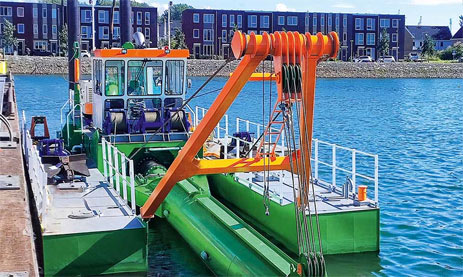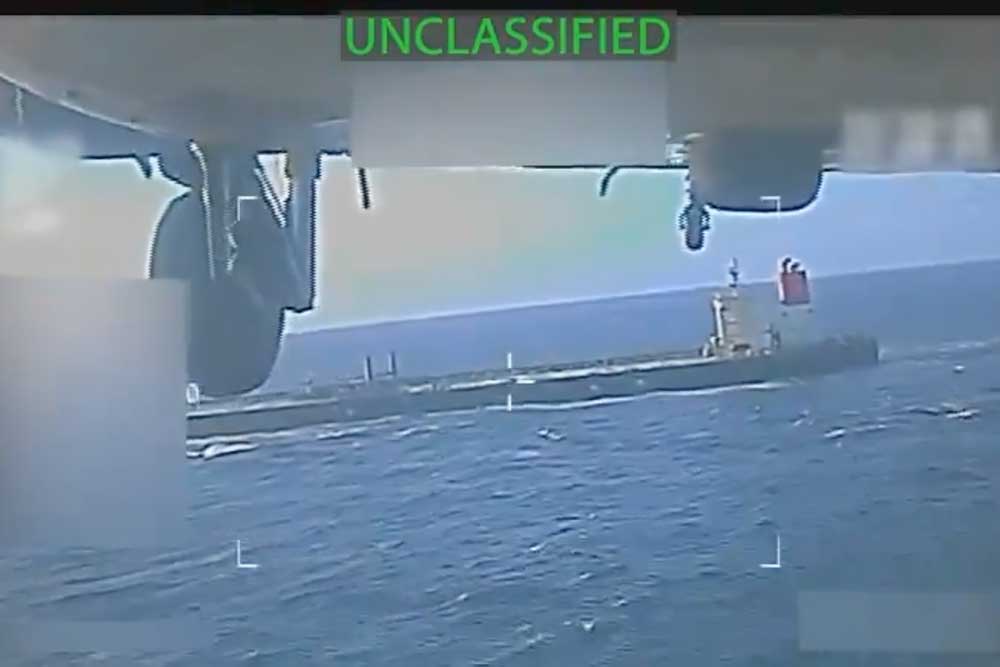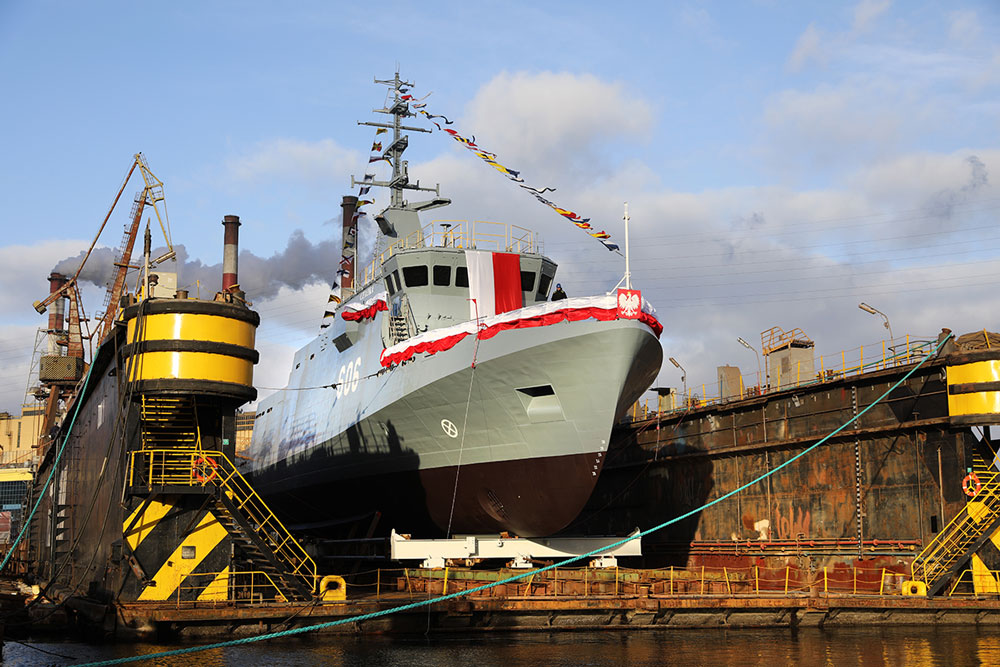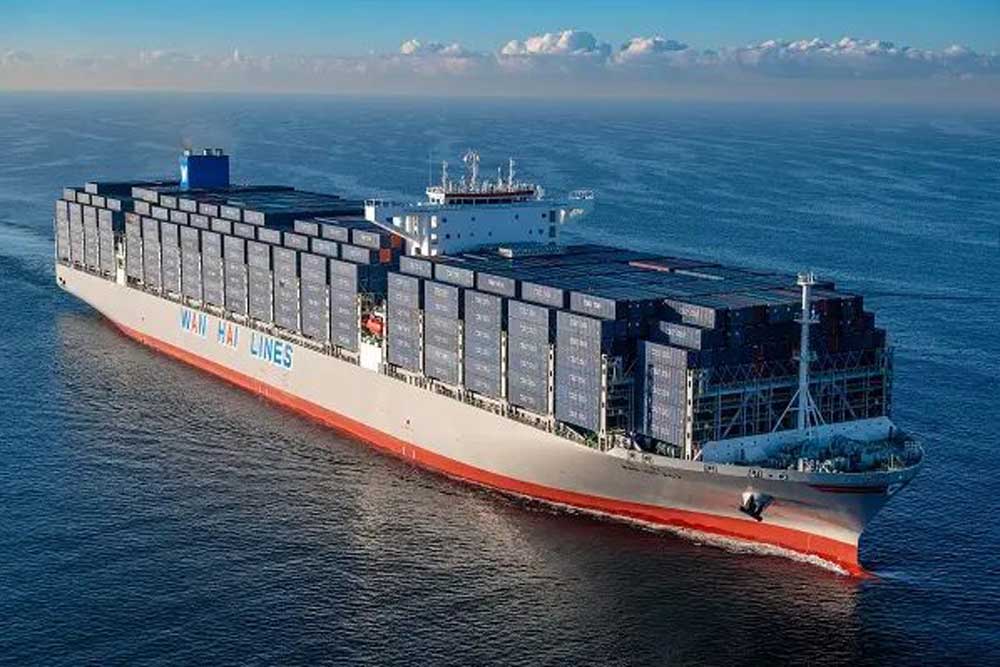The company Deep Ocean and its joint venture partners have taken delivery of a new unmanned vessel, the “USV Challenger”.
Among other things, it will be used for surveying and maintenance work in the offshore industry. It will be able to be remotely controlled from land even in difficult weather conditions.
The vessel will soon arrive at the Deep Ocean subsea base in Killingøy, Haugesund in Norway. The service company will test its launch and recovery system the ROV (Remotely Operated Vehicle) on board and obtain approval from the maritime authorities for its remote control capabilities. Thereafter, the Unmanned Surface Vehicle (USV) will be chartered by Deep Ocean on a long-term basis.
The vessel is owned by USV AS, a joint venture company established by Solstad Offshore, Østensjø Rederi and Deep Ocean. The main purpose of the company is to invest in and own unmanned vessels.
Solo or additional vessel
The “USV Challenger” is remotely controlled from shore and is equipped with several autonomous functions. It can also operate remotely under difficult weather conditions. During the mission, both the USV crew and the ROV operators will be based at the same Remote Operating Center (ROC) in Killingøy near Haugesund.
“The USV is of course capable of being deployed on the high seas and carrying out underwater work independently. But it can also be used as an extremely cost-effective complement to larger vessels,” says Øyvind Mikaelsen, CEO of Deep Ocean.
Instead of mobilizing large vessels for each offshore task, operators could use the USV and its onboard ROV for parts of the underwater installation, survey or IMR tasks. As the USV reduces the need for repeated crossings of larger vessels, it offers significant cost savings. “The value proposition is clear – the USV is a more economical and efficient alternative for a wide range of offshore operations,” says Mikaelsen.
Wide range of underwater services
The “USV Challenger” will be equipped with an all-electric work ROV with hydraulic capabilities that can operate in water depths of up to 1,500 meters. In addition, the ROV will be equipped with a comprehensive tool package, enabling it to carry out a wide range of underwater work.
The ROV also has sensors for surveying pipelines, mapping the seabed and annual inspection work including measurements and cleaning work. It can also interface with a fly-out ROV to assist a larger host ROV in visual inspection in busy, congested and high-risk operating environments. The ROV can also perform 3D scans of subsea assets.
Same software as inspection drone
To enable highly efficient underwater inspections, the ROV has been equipped with the same software as Deep Ocean’s autonomous inspection drone (AID). This enables the ROV to carry out pre-programmed inspections of underwater objects. An important prerequisite for this is the digital twin platform developed by Deep Ocean, which is used to control a model of the ROV. In areas of the seabed with poor visibility, the operator can fly and operate the ROV in the digital twin instead.
The ROV can also carry out maintenance and repair work underwater, including light lifting operations, as it is equipped with powerful thrusters and has a lifting capability through the frame. It is also able to open hatches on underwater templates, carry out repair work, use torque tools on underwater equipment, use cleaning tools and carry out leak measurements. It can also connect and disconnect flying leads, provide general commissioning support on subsea equipment and provide touchdown support during cable installation.
“The USV provides a highly cost-effective transportation and launch platform for the ROV, and the well-equipped ROV enables efficient underwater operations,” says Mikkelsen. “We anticipate that this combination will bring significant cost benefits to operators of subsea equipment in both the oil and gas industry and the renewable energy sector.”
Special launch and recovery system
To extend the deployment window, the USV is equipped with a novel launch and recovery system (LARS, short for Launch and Recovery System) developed by Deep Ocean. The LARS consists of an electric winch, a pulley system, a kicker and a tailgate.
The ROV is deployed and recovered via the stern of the USV. When deploying, the ROV is simply pushed in while the USV moves forward. When retrieving, it is pulled in like a trawl while the boat moves forward.
The USV is also equipped with a gyro stabilizer, which reduces the movement of the vessel when launching and retrieving. The combination of the LARS and the other features allows the ROV on board to be deployed and retrieved in significant wave heights.
“We have developed the USV around the LARS. From conventional vessels, we know the challenges and limitations associated with moonpool or A-frame solutions,” explains Mikaelsen. That is why a solution inspired by fishing and trawling was chosen. “We have carried out tests in rough seas and firmly believe that the operational potential of our LARS is higher than that of a conventional solution for such a small vessel.”
30 days offshore operating capacity
The “USV Challenger” is 24 m long and 7.5 m wide. It is equipped with a hybrid diesel-electric propulsion system and a battery pack that allows the unmanned vessel to operate at sea for up to 30 days without recharging or refueling.
The USV solution will reduce CO2 emissions by more than 90 percent when conducting IMR operations underwater compared to a conventional offshore vessel. Remotely operated operations from shore are part of this calculation. In addition, Deep Ocean and its joint venture partners have developed the vessel’s remote control system by integrating equipment from numerous maritime suppliers along the Norwegian coast. The vessel was delivered by the Astilleros Gondán shipyard in Spain.
“Around 25 technology suppliers have provided us with equipment prepared for future adaptation to remote operation. We are proud of this initiative, which helps to improve the entire maritime supply chain,” adds Mikaelsen.
The USV Challenger is also equipped with a wheelhouse and is approved for operations within 20 nautical miles of the Norwegian coast with four crew members on board. This is a useful solution for testing the USV, LARS, remote control technology and future new technologies on land.
Joint trials with companies in the North Sea
Deep Ocean and operator Aker BP have agreed to trial the use of the USV for underwater inspection, maintenance and repair (IMR) and survey work. The two companies are already working together under a framework agreement for IMR and subsea survey work, and Aker BP has contributed to the development of the USV. The two companies aim to shift 30 percent of IMR work from conventional vessels to USVs in the long term.
Deep Ocean is also in talks with other operators on the Norwegian Continental Shelf (NCS) to use the USV for demonstration projects. Vår Energi is one of the participants in a project to demonstrate the USV’s operational capability and capabilities in 2025. The vessel will spend the next four to five months in Haugesund to carry out various installation work and complete a test phase on land.
“We are seeing strong interest from operators who have recognized the cost and environmental benefits of integrating the USV into their subsea operations,” concludes Mikaelsen.














